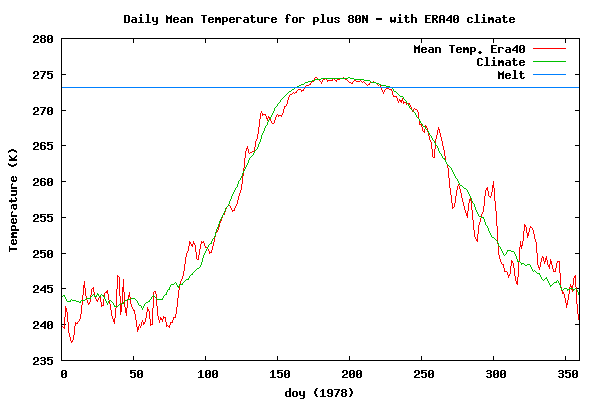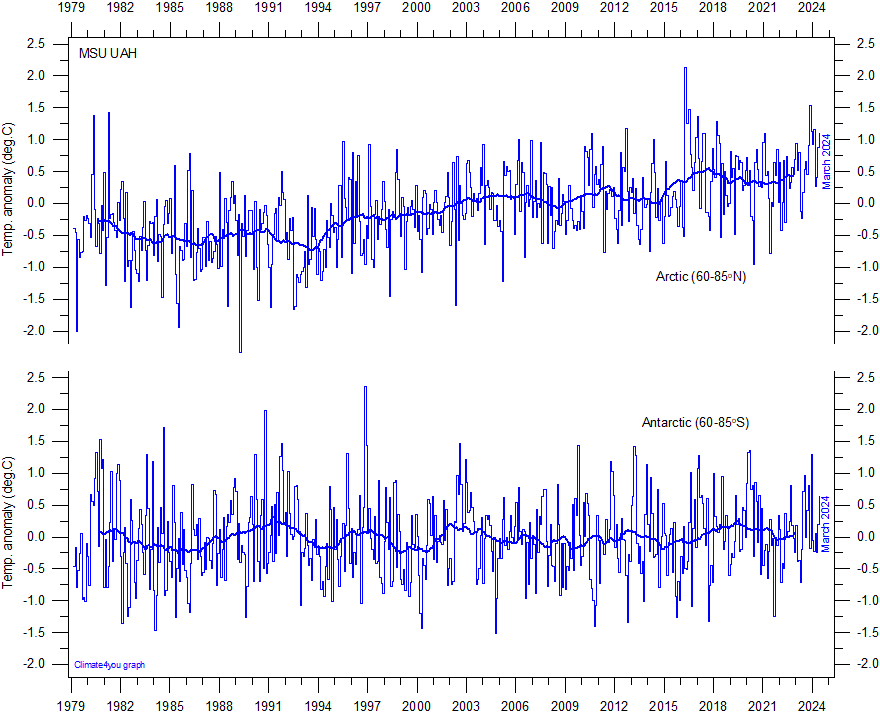Update: Based on a comment to this article, it seems I overestimated the degree of general knowledge concerning the conditions of the Martian climate and the properties of water. I have updated this article to include data showing why I think the globules are not evidence of liquid water.
Phoenix touched down at its landing site in the Martian arctic on 25 May 2008. Recent examinations of early Phoenix photographs show globules of what may be liquid water on the lander’s struts.

Image: Mars water, Renno, et al., NASA
Images of one of Phoenix's struts taken by the lander's robotic arm camera on Sols (or Martian days) 8, 31 and 44 of the mission. The two spheroids enclosed by the circle appear to merge with each other.
Some Phoenix scientists argue is a sign that the globs are liquid water, but researchers are divided on just what the photographs actually show.
Let’s talk about water and triple point:
The triple point of any substance is that temperature and pressure at which the material can coexist in all three phases (solid, liquid and gas) in equilibrium. Specifically the triple point of water is 273.16 K, (0.01° C, 32.018° F) at 611.2 Pa [pascals], (6.112 mb [millibars]).
Now, let’s look at this diagram showing water in relation to the Martian atmosphere:
The atmospheric pressure on Mars is so low, even in the most favorable spots where the pressure is higher than average, liquid water is restricted to the temperature range +0.01º C to +9 °C.
So, for liquid water to exist on Mars, the atmospheric pressure would have to be between 6.1 mb to 10 mb and the temperature between +0.01º C to +9 °C.
The temperature and pressure at Phoenix’ location on the dates the three photos were taken were:
(Martian day number, low temp, high temp, atmospheric pressure)
Sol 8 -83 ºC, (-117.4º F), -31 ºC, (-23.8º F), 8.49 mb (849 Pa, 0.00837 atm)
Sol 31 -79 ºC, (-110.2º F), -31 ºC, (-23.8º F), 8.16 mb (816 Pa, 0.00805 atm)
Sol 44 -78 ºC, (-108.4º F), -30 ºC, (-22.0º F), 8.04 mb (804 Pa, 0.00793 atm)
Highs between Sol 8 and Sol 44, inclusive:
-25 ºC, (-13º F, 248º K) 8.5mb, (850 Pa, 0.00838 Atm)
For those “globules” to be pure liquid water, we would have to throw out the physics of water as we understand it, the physics of the Martian atmosphere as we understand it, or both. Neither are likely to be incorrect on this scale.
So. The globules aren’t pure liquid water. BUT—what if the water is contaminated?
Phoenix found perchlorates in the soil around the lander. Perchlorates are highly water soluble and in solution allow the water to remain in a liquid state to -70°C. The presence of perchlorates increases the plausibility of water solutions in a liquid state.
Also, Phoenix’ landing rockets “burned” hydrazine, which decomposes into ammonia, nitrogen gas, and hydrogen gas. I have not calculated the phase states of hydrazine or ammonia under Martian climatic conditions, but I propose either would be a better bet than pure liquid water.
In any event, the globules really can’t be pure liquid water, though they may be water with antifreeze added—big deal. NASA’s press release is much ado about nothing but it serves to demonstrate that such releases are a bad idea until all your data is in, properly reduced, and passed around for comment and critique by other researchers.
Every once in a while, there is a “sensational” story about water being found on Mars as though it was a new discovery. To set the record straight, it has long been known that there IS, in fact, water on Mars.
A small, small sample of such stories from only the BBC:
21 June, 2000, Water 'found on Mars'
26 July, 2001, Water reserves found on Mars
28 May, 2002, Mars ice could flood planet
16 February, 2003, Ankle-deep on Mars
24 January, 2004, Long history of water and Mars
6 March, 2004, More signs of water found on Mars
18 May, 2004, Rover finds new Mars water signs
26 July, 2004, Probe maps water vapour on Mars
21 February 2005, Mars pictures reveal frozen sea
29 July 2005, Ice lake found on the Red Planet
5 September 2005, Martian dunes hide water secret
30 November 2005, Radar sees ice deep below Mars
16 March 2007, Polar water 'would blanket Mars'
19 December 2007, 'Active glacier found' on Mars
20 December 2007, Greenhouse clue to water on Mars
17 July 2008 14:28 Water 'widespread' on early Mars
31 July 2008 22:15 NASA's lander samples Mars water
There’s water on Mars. So okay already. Move on.










You don't understand the difference between current-day liquid water (what the new paper suggests) vs. water ice (yes, there's lots of it!) vs. evidence of past water on Mars (yes, they found that too). If the interpretation of these images is correct, and there was indeed liquid water that splashed onto the legs, that would be a huge NEW finding.
ReplyDeleteFirst, thank you so much for your condescending words. I always enjoy it when the amateur mind-readers out there think they know what's in my head. Having been in astronomy and astrophysics for over four decades, I'd like to think I know a little something, though.
ReplyDeleteIt seems I overestimated the degree of general knowledge concerning the conditions of the Martian climate and the properties of water. I have updated this article to include data showing why I think the globules are not evidence of liquid water. Please read it again.